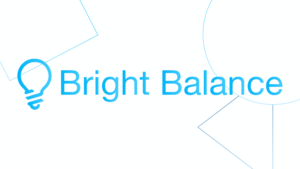According to the statistics from Statista, the revenue in the Software as a Service market is projected to reach US$187.20bn in 2024, most of which will be generated in the US. As a result, for organizations in this rapidly scaling industry, the month-end close process can resemble a marathon conducted at sprint speed. Multiple revenue streams, complex subscription models, and intricate revenue recognition requirements exacerbate this challenge significantly. As your finance team engages in late-night efforts to meet critical reporting deadlines, one may contemplate whether a more efficient method exists. Fortunately, there is a more effective approach.
The True Cost of an Inefficient Close
Before exploring potential solutions, analyzing the concealed costs associated with an inefficient closing process in a Software as a Service (SaaS) business is essential. These costs may include:
- Postponed reporting of key SaaS metrics such as Monthly Recurring Revenue (MRR), Annual Recurring Revenue (ARR), Customer Acquisition Cost (CAC), and Customer Lifetime Value (LTV), which could impede strategic decision-making.
- An increased likelihood of errors in revenue recognition.
- Staff exhaustion, potentially leading to turnover.
- Reduced opportunities for comprehensive strategic analysis of unit economics.
- Compliance risks stemming from hastily conducted review processes.
Five Strategies for A Faster Close
Implement a Rolling Close Process
Instead of consolidating all tasks into the initial week of the month, adopting a continuous close approach might alleviate pressure on your team. This includes the following practices:
- Reconcile subscription revenue every week.
- Process customer churn and expansion revenue throughout the month.
- Review and post recurring journal entries promptly.
Establish and Document Standardized Procedures
Develop a comprehensive checklist for the closing process that encompasses the following elements:
- Assignment of tasks along with their respective dependencies.
- Documentation requirements for revenue recognition.
- Clearly defined review protocols about deferred revenue.
- Expected timelines for each process.
- Common solutions for troubleshooting subscription billing challenges.
Effectively Leverage Technology
Contemporary financial tools can automate numerous labor-intensive tasks through the following mechanisms:
- Automated billing and revenue recognition.
- Integration with customer relationship management (CRM) and subscription management platforms.
- Streamlined automated dunning processes.
- Real-time dashboards for Software as a Service (SaaS) metrics.
Establish Clear Communication Protocols
- Provide regular updates to stakeholders during critical periods.
- Implement centralized task tracking across finance and revenue operations.
- Develop explicit escalation procedures for addressing billing and recognition issues.
Focus on Continuous Improvement
- Monitor key performance metrics every month.
- Document any bottlenecks encountered in the revenue recognition processes.
- Conduct regular feedback sessions with the team.
Bright Balance Fractional CFO Model
Implementing some of these strategies can pose challenges, especially for expanding SaaS businesses that may not have access to specialized accounting and finance expertise. Engaging a fractional CFO from Bright Balance provides a flexible and cost-effective alternative, offering numerous advantages, including:
Immediate Expert Implementation
- Utilization of best practices derived from diverse SaaS environments.
- Extensive technical proficiency in subscription-based accounting.
- Demonstrated frameworks for optimizing the month-end closing process.
Flexible Scalability
- Right-sized support for your growth stage.
- Ability to scale during complex periods (fundraising, M&A).
- No fixed overhead costs.
- Access to specialized SaaS accounting expertise.
Technology Optimization
- Selection and implementation of SaaS-focused financial tools.
- Design of automated workflows for subscription management.
- Creation of custom SaaS metrics dashboards.
- Team training on modern financial systems.
Sustainable Process Development
- Comprehensive documentation of procedures.
- Team training on SaaS-specific accounting.
- Ongoing support.
- Regular process optimization.
Most SaaS companies engaged with our expert accounting and finance team have reduced their month-end close from 20 days to 7-10 days within three months. This improvement allows finance teams to:
- Provide faster insights into key SaaS metrics.
- Reduce overtime during close periods by 75%.
- Improve revenue recognition accuracy by 40%.
- Focus more time on strategic growth initiatives.
Moving Forward
Efficiency in managing the month-end close process is essential for enhancing the financial operations of SaaS companies and aiming to expedite growth while upholding financial excellence. Collaborating with experienced fractional finance leaders can facilitate the implementation of sustainable practices that evolve alongside your organization, thereby ensuring both accuracy and efficiency in financial reporting.
This extends beyond just accelerating the closures; it is also about establishing a solid financial roadmap supporting your company’s progression from startup to enterprise.
Contact our Dallas office for a complimentary CFO consultation to explore the benefits of Fractional Accounting with Bright Balance today!




